3-dimensional lightbulb theorem
3-dimensional lightbulb theorem
The 3-dimensional lightbulb theorem states that any knot \(K\subset S^1\times S^2\) which intersects \(\{p\}\times S^2\) once transversely is unknotted (isotopic to \(S^1\times\{q\}\) for some \(q\in S^2\)). When I heard this statement, my immediate reaction was: surely that's wrong?! You can always knot things locally in a small ball without changing the intersection with \(\{p\}\times S^2\); why should you suddenly be able to undo those knots? However, you can quickly draw yourself a picture to convince yourself that it's true.
Unknotting knotted rays
Here's one way to visualise \(S^1\times S^2\): take the "solid annular" region between two concentric spheres (say at radii 1 and 2) in 3-space, and identify the two spheres (i.e. whenever you move across the sphere at radius 1 you reappear at the point in the sphere at radius 2 which lies on the same ray through the origin, and vice versa). In this picture, the circles \(S^1\times\{q\}\) are precisely the segments of rays through the origin which intersect the solid annulus (shown in red below; \(q\) specifies which ray).
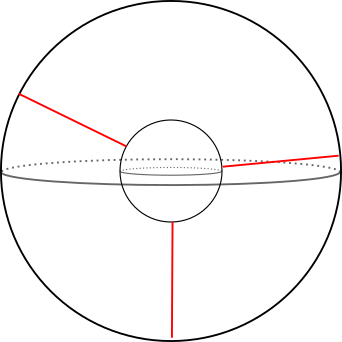
The kind of knots that the classical lightbulb theorem talks about are the following. Take a ray segment, cut out the middle bit, and replace it with a knotted arc in the interior of the solid annulus (with the same endpoints). I'll call this a "knotted ray".
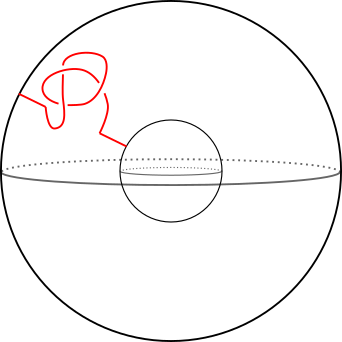
Why should you be able to unknot this?
Well, in this picture it's not too hard to see why. You can try to change a crossing by isotoping one of the strands around the back of the inner sphere. Here's a sequence of pictures which illustrates what I mean (red knots are snapshots of the isotopy, the colourful pictures are supposed to indicate an isotopy in progress). We change the rightmost crossing from an over- to an under-crossing. As soon as you can change crossings like this, you can unknot things very easily.


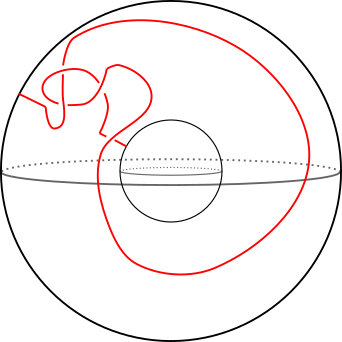
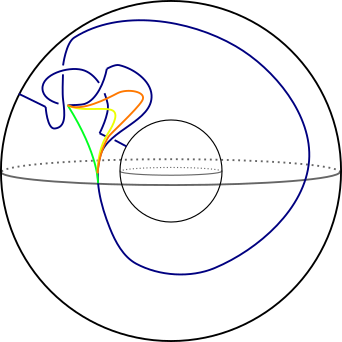
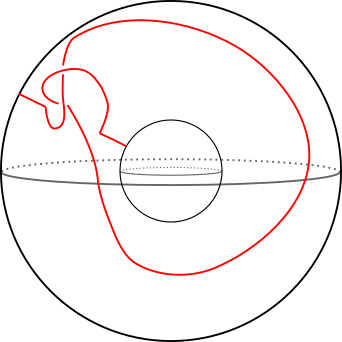
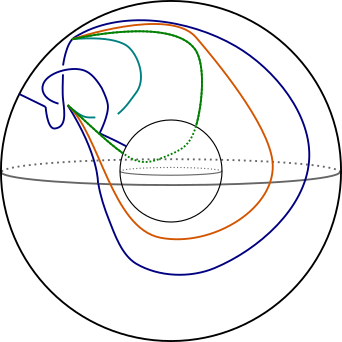
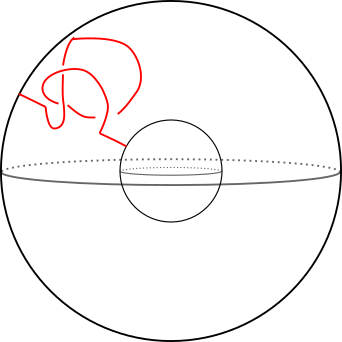
What about the knot group?
Usually, codimension 2 knotting is related to the knot complement having nontrivial fundamental group. For a loop \(S^1\times\{q\}\), the complement is \(S^1\times(S^2\setminus\{q\})\), which is homotopy equivalent to \(S^1\). The usual generator for the knot group (the meridian which links the knot) is nullhomotopic. The same is true for any knotted ray: if we take the sphere \(\{p\}\times S^2\) which our knotted ray intersects once transversely then we can take a meridian for the knotted ray which sits in this sphere; this meridian then bounds a disc in this sphere.
Why "lightbulb"?
You're supposed to think of the inner sphere as a lightbulb, connected to the outer sphere (ceiling) by a cord (knotted ray). This intuition makes it absolutely clear why you can unknot: you just push the bulb back along the cord until all the knots come undone; then you say that that this is equivalent to doing an isotopy of the cord and keeping the bulb fixed.